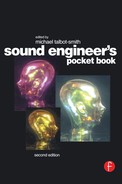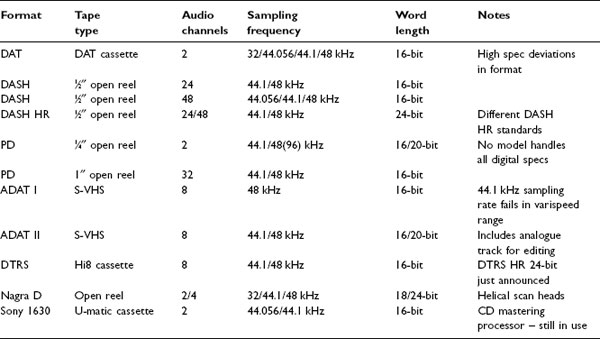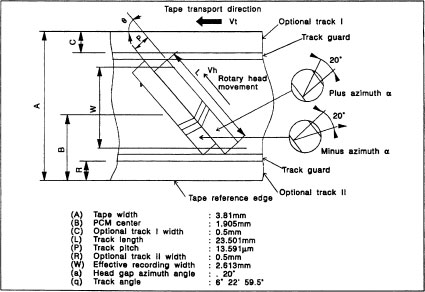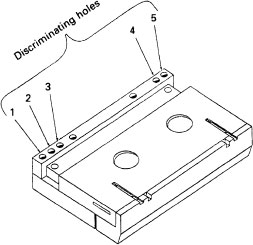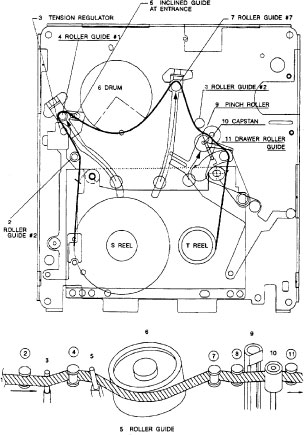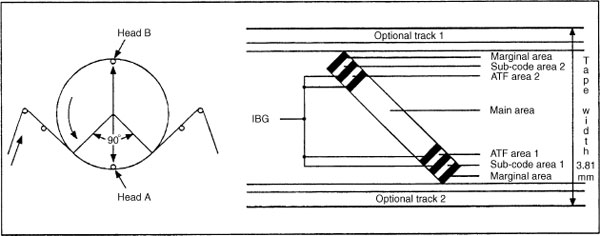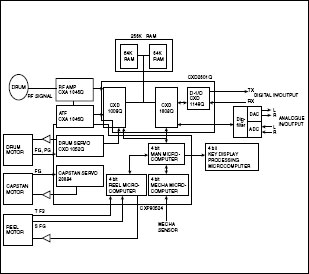Introduction
Since the first commercially available digital audio recording systems appeared in 1979, there has been a proliferation of digital tape formats. Many of the early formats are now obsolete but their recorded tapes still exist and need to be recognized. Most formats have been manufacturers’ proprietary developments, becoming recognized as standards as more manufacturers agree to support the format. Reel-to-reel digital recording was dominated by the DASH (Digital Audio Stationary Head) and PD (ProDigi) formats, the latter now unsupported. Both accommodated a family of sub-formats, many of which never materialized as commercial products.
The most widely accepted format is R-DAT, or DAT as it is more commonly referred to. While most manufacturers of DAT equipment have kept closely to the standard, commercial and user pressures have created variants to extend applications and technical specification. Some changes such as timecode have been incorporated within the DAT specification, most deviations have not, and so compatibility is not always certain.
In some recent formats, where proprietary rights have been more closely maintained, manufacturers supporting the same format have added non-compatible functionality while maintaining full compatibility at a digital audio track level which makes defining the features of the digital format, manufacturer- and machine-dependent.
It is also necessary to be aware of third party processors being used in conjunction with standard digital multitrack recorders to increase the basic digital audio specification. This normally requires the use of two standard 16-bit digital audio tracks to store a 20 or 24-bit word length within the tape format, reducing the audio track capacity and removing practical format compatibility. This process has been most common within the DTRS digital format.
DAT: Consumer DAT recorders only record at 48 kHz sampling rate while professional machines will record at 44.1 and 48 kHz. Both machines replay 44.1 and 48 kHz. The other optional sampling frequencies are now less common.
Deviations from DAT format by manufacturer, achieved by increase in transport speed:
– Pioneer 96 kHz sampling rate option
– Tascam 24-bit word option
– Sonosax 2 or 4 tracks with 44.1/48/88.2/96 kHz sampling rate
DASH HR. DASH multitrack machines are compatible on a track-to-track basis, i.e. a 24-track tape replays on a 48-track while a 24-track will replay 24-tracks of 48-track tape. DASH HR (High Rate) machines are not compatible in the same way and, as different techniques are employed, nor are they compatible between manufacturers’ machines.
PD. The ProDigi format is not being supported but there are a lot of machines still in use. There are three variants in the 2-track standard that support modified specifications, i.e. 20-bit or 96 kHz. There is also a 16-track 1⁄2-inch version of the multitrack format.
ADAT Types I and II. Type I carries timecode recorded in the subcode area, can record and replay 20-bit digital audio, can record at 44.1 kHz, and carries an analogue track for cue/editing. Type II machines can handle all formats but backwards compatibility is restricted by the bit rate used.
DTRS. DTRS HR version has been announced handling 24-bit digital signals. HR format machines will also replay standard DTRS format tapes.
Nagra D. Machine will record as programmed within the Nagra D format. Can handle up to 24-bit word on tape but choice of A/D converters limits analogue input. Programming option for two or four audio track operation.
Sony PCM1630. The last processor developed for use with U-matic video recorder in CD mastering applications. Still in use although declining.
Head Azimuth System
See Figure 103.
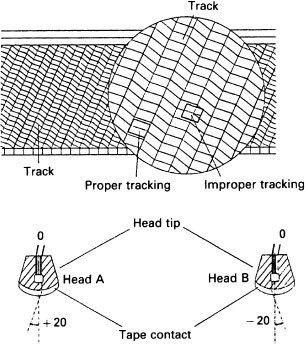
Figure 103 DAT head azimuth system
DAT Cassette Discriminating Holes
See Figure 107 and the table on page 147.
Tape Path
See Figures 108–110.

Figure 105 DAT drum position relative to the track
Settings of the discriminating holes in DAT cassettes


Figure 110 The DAT regulator arm assembly
(b) Pre-recorded tape (playback only)
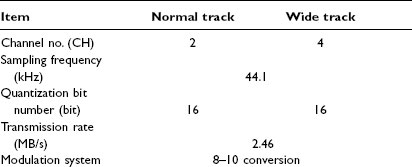

This system is becoming increasingly popular in the professional field, where its compactness and ease of use lends it well to locations sound recordings of speech.
There are two types of disc:
1. pre-recorded which are in effect small CDs and are played in a similar way to them;
2. recordable, which are magnetic. In recording the laser heats a very small area of the disc to a temperature above the Curie point (about 185°C), allowing a magnetic head to record the digital data on the disc.
In the replay mode a much lower laser power in used. The reflected laser beam’s polarization is rotated by the magnetic field of the recorded signal and this rotation is detected by a suitable optical process.
Data:
Disc diameter |
64 mm |
Disc thickness |
1.2 mm |
(Cartridge size |
72 × 68 × 5 mm) |
Track pitch |
1.6μm |
Scanning velocity |
1.2–1.4 m/s |
Playing and recording time |
74 minutes max (148 minutes in mono) |
Sampling frequency |
44.1 kHz |
Coding |
ATRAC (Adaptive Transform Coding) |
Laser wavelength |
780 nm |
Laser power: |
|
Recording |
2.5–5 mW |
Replay |
0.5 mW approx |
